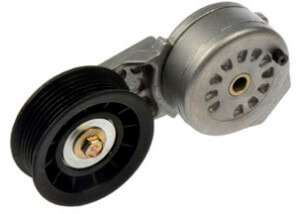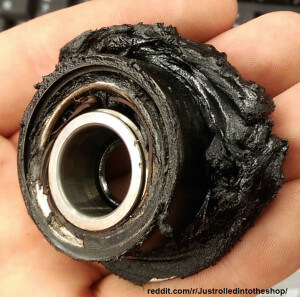P0300 random misfires
Diagnose P0300 random misfires
If you own a GM vehicle and encounter a check engine light and P0300 random misfires code, read this service bulletin #PIP5264 before replacing any parts. The bulletin applies to the vehicles listed below:
2004-2011 Cadillac STS
2004-2015 Cadillac CTS SRX
2013-2015 Cadillac ATS XTS
2005-2015 Buick Lacrosse Allure (Canada only)
2008-2015 Buick Enclave
2010-2015 Chevrolet Camaro
2011-2015 Chevrolet Captiva Sport
2015 Chevrolet Colorado
2008-2015 Chevrolet Equinox
2012-2015 Chevrolet Impala
2008-2012 Chevrolet Malibu
2009-2015 Chevrolet Traverse
2007-2015 GMC Acadia
2015 GMC Canyon
2010-2015 GMC Terrain
2007-2009 Pontiac G6
2008-2009 Pontiac Torrent
2007-2009 Saturn Aura
2007-2010 Saturn Outlook
2008-2010 Saturn Vue
with 3.6 LY7, LFX, or LLT 2.8 LP1 3.0 LF1 or LFW engine
The P0300 misfires, check engine light, and possible codes occur during deceleration which doesn’t make much sense considering engine load is low or non-existent in this mode. That alone should raise a red flag and something is fishy.
Before explaining the cause you must first understand HOW a computer knows you have a misfire. Contrary to popular belief, engine power isn’t generated in a continuous fashion. It’s generate in pulses. Each time a cylinder fires, it generates a power pulse. Engineers call this a power contribution. Each contribution accelerates engine rotation. To monitor these contributions, the computer looks at the crankshaft position sensor and correlates the acceleration speed of the crankshaft in relation to each spark plug fire. It expects to see a contribution immediately after firing the spark plug. If it doesn’t it figures there was a misfire.
But what if the sensor is providing false information? During acceleration and deceleration the automatic belt tensioner moves to accommodate the higher and lower tension.

Check the condition of the tensioner and the tensioner pulley
If the tensioner spring has deteriorated or is binding, it can’t respond quickly enough to the change in tension and that results in the tensioner applying the wrong belt tension. Also, if there’s dirt or debris on the tension idler pulley, this could prevent a smooth rolling action that would interpreted as a “bump” or misfire.

Here’s what a plastic belt tensioner pulley looks like when the bearing seizes. This was obviously making noise and causing problems before it seized but the owner ignored it and the pulley melted as the belt slid over the seized pulley
In addition, worn engine mounts cause excess engine rock during acceleration and deceleration.
GM has advised all dealers to inspect the condition of the automatic belt tensioner, the belt tension pulley, belt, and all idlers rollers plus the condition of the engine mounts BEFORE performing ANY diagnostics on the ignition or fuel injection system.
©, 2015 Rick Muscoplat
Posted on by Rick Muscoplat